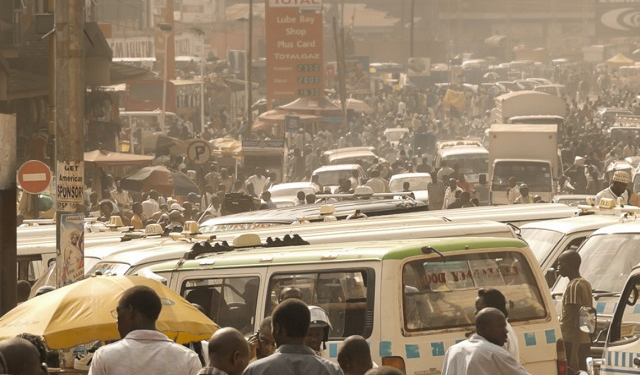The vibrant streets of Kampala, Uganda, are shrouded in a cloud of dust and smoke during rush hour, highlighting a concerning issue – air pollution. The city’s bustling streets, filled with decades-old trucks and high-emission vehicles, contribute to a growing environmental crisis.
Despite the severity of the problem, limited data and inadequate measures have hindered effective interventions. Initiatives like the Wanyama Autosafety Initiative are emerging to address the urgent need for action.
Air Pollution and the Automotive Landscape
Uganda’s capital, Kampala, reflects the challenges many African cities face – a lack of air pollution monitoring coupled with a surge in the importation of high-emission vehicles.
The deadly consequences are evident, with a 2019 UNICEF report revealing a nearly 60% increase in deaths due to outdoor air pollution in Africa between 1990 and 2017. Michael Wanyama, founder of the Wanyama Autosafety Initiative, emphasizes the pressing need for comprehensive solutions.
High Importation of Used Vehicles
A 2020 report from the UN Environment Programme identified Africa as the global leader in importing used light-duty vehicles between 2015 and 2018. Uganda, in particular, imports approximately 70,000 vehicles and 100,000 motorcycles annually, with over 40% exceeding eight years of age.
Most of these vehicles, averaging 15 years old, are sourced from Japan, Singapore, South Africa, and the United Kingdom.
Challenges in the Post-Importation Phase
Upon arrival in Uganda, these vehicles encounter further challenges. Many require frequent repairs, and the absence of effective oversight of garage operations allows untrained mechanics to exacerbate emissions issues unintentionally. Wanyama’s Autosafety Initiative seeks to provide training to mechanics, but more funding is needed to improve the scalability of this critical program.
Expanding Middle Class and Transportation Dynamics
The rapid expansion of Africa’s middle class is propelling increased used car purchases. This surge translates to more vehicles on the roads, contributing to congestion and longer commutes.
Raphael Arku, a professor of environmental health sciences, notes that the absence of a reliable public transport network prompts individuals to acquire their vehicles, further stressing the roads and emissions regulations.
Addressing the Challenges and Seeking Solutions
In the face of these challenges, a growing awareness and resistance are emerging. The Wanyama Autosafety Initiative represents a small yet significant step towards tackling air pollution. Initiatives focusing on public awareness, emission regulations, and training for mechanics are essential components of a comprehensive strategy.
Sustainable solutions need to be explored to manage the surge in vehicle ownership while prioritizing environmental conservation.
Conclusion:
The need for immediate action is evident as Kampala grapples with the environmental repercussions of a burgeoning automotive industry. Efforts by organizations like the Wanyama Autosafety Initiative underscore the importance of addressing air pollution in Uganda’s urban landscape.
A holistic approach, encompassing regulatory measures, public awareness, and sustainable transportation solutions, is imperative for safeguarding the health of the population and the environment.
Original Article: https://www.devex.com/news/africa-s-air-quality-problem-old-cars-and-no-data-99744




